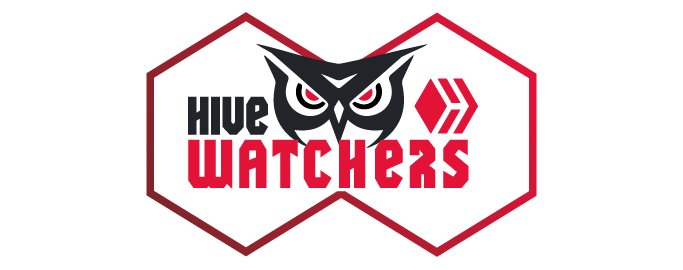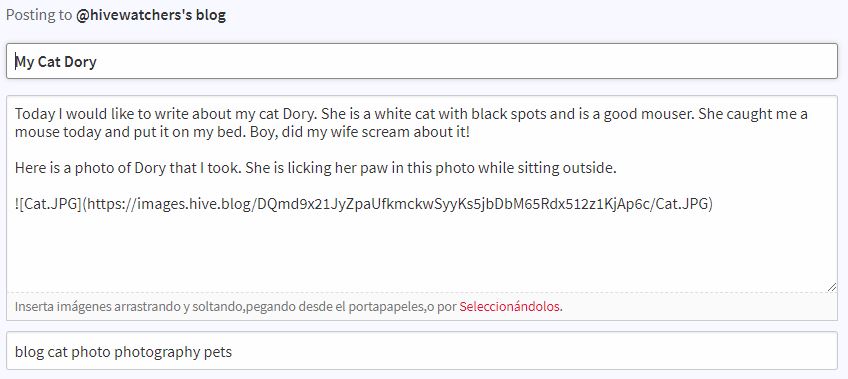
Tags are used to categorize, sort, label and locate posts on the HIVE ecosystem.
Most of you noticed that:
- a post must have at least one tag
- the first tag cannot be changed
- some posts have a lot more tags than HIVE allows
There is a reason for all of this. Let us discuss the first and second point first. The primary (first) tag is mandatory and is actually not a tag at all. It is a category. It visually looks like a tag but the blockchain does not recognise or treat it the same as the others. It cannot be edited after the post is made.
Subsequent tags are all tags and can be changed at any point in time. Their purpose is help collation. While Hive.blog only allows seven of these tags (on top of the category, totalling eight), the blockchain does not have such limits. For this reason, some 3rd party applications inadvertently allow users the ability to attach additional tags. Also any tag used within the content of the post will be automatically added to the listed categories of tags.
There are two styles of tags: generic and proprietary. Generic tags can apply to a wide range of topics. # Blockchain, for example, can be attributed to a discussion of the HIVE ecosystem or of any blockchain project. # Food can be used to share recipes, discuss the chemistry of ingredients, talk about world hunger, or to simply post a picture of one's dinner.
Proprietary tags either have been created to be utilized as a part of specific project, such as # peakd or # ocd, or are carefully-curated to support a narrow community, such as # steemstem or # curie. Posts using these proprietary tags are typically scrutinized by the community they represent for quality.
Tag Use
Tags on the HIVE ecosystem are treated differently than on Instagram, for example. On Instagram, it is beneficial to use popular tags, even when they are irrelevant to the content, because the ultimate goal is for the image to gain visibility. The more followers an account has the better.
On the HIVE ecosystem, quality is paramount. Uploading a picture coupled with improper tags and thus authoring a post holds no benefit to the author if the traffic is unintentional. Rather than being beneficial, the tags can lead viewers to downvote (flag) the post and remove whatever rewards it could have otherwise received. It is always in the writer's best interest to use tags that accurately-describe the posted content.
In the preceding paragraph we briefly touched on the ability to insert more than five tags into a single post. More isn't necessarily better, however. Tags are meant to represent the topic of the post. Adding a lot of tags is not necessary and does not generate more viewership but instead dilutes the quality of the post by making it look spammy and scammy.
Tag Spam
deliberately applies tags that don't fit the post in order to game the rewards their curators provide. For example, let's take a close look at the # introduceyourself tag.Tag spam, as defined by the @hivewatchers, happens when an author
The # introduceyourself tag is meant to be used for one's introductory post -- a post that talks about the author, shares why they joined the community, mentions their goals or dreams, and in general provides an "about me" overview. Typically, this is the first post a new user would make and is therefore the most important post for that person. The # introduceyourself tag is also curated by myriad members and bots who welcome new users to the platform, often with an upvote.
Individuals who realized they can exploit the good-will of other HIVE users by creating numerous similar introductory posts using the # introduceyourself tag or by applying the tag to irrelevant posts are committing the act of tag spam. By doing so, they are harming legitimate tag users and negatively impacting the entire community.
Tag Abuse
unintentional application of the wrong tags to a post. They do this for a variety of reasons, the most common being a misunderstanding of how tags work and what they mean.Tag abuse, as defined by the @hivewatchers, is the
For example, the # hive tag is meant for discussing the hive.blog website, HIVE IO, guides on how to use the site, and other directly-relating matters. A lot of people, unfortunately, mistakenly believe that the tag is a catch-all for all content that is posted through the website. The more people post irrelevant content under the tag, the more confusion it creates and the more tag abuse takes place.
Navigating Tags
When one pulls up the All tags button at the top of the tag list, they are presented with an filtered view of the tags with related information on how many posts and comments sport them and number of subscribers for these is to-date. Often this table is misunderstood. Just because a lot of posts have been created using this tag, it does not make it the preferred tag to apply to a post. Likewise, the payouts are not an indication of what a post using this tag will earn.
Tags featured on the side of the home page are listed in descending order based on their popularity. It does not mean that these are the best tags, only that more posts use them than other tags. Here is an overview of the top most 30 most popular tags:
| Tag | Explanation |
|---|---|
| # life | A generic tag that fits most blogs. It is very general and has a wide application. |
| # photography | A tag meant for photographs taken by the member. It is not meant for random photographs taken from the internet. |
| # hiveio | A tag for posts about the hive.blog website itself. Posts can include suggestions on how to use the website, improvements, or discussion about HIVE IO. |
| # sp | This is a language tag for posts written in the Spanish language. |
| # art | This tag is meant for posts showcasing original traditional and digital visual art or otherwise artistic expression. |
| # introduceyourself | A tag specific to the initial self-introductory post a user would make. |
| # bitcoin | Meant for posts discussing bitcoin. |
| # blog | Another very generic tag that can be applied to virtually any post. It was originally meant to be used for diary/journal-type posts but has since evolved. |
| # spanish | This is another language tag for posts written in Spanish. |
| # travel | This tag is for posts about travelling. It is popular for vacation photos or posts describing visited locations. |
| # cryptocurrency | Posts discussing any crypto, including Hive/HBD, fit within this tag. |
| # hive | This tag is for discussing the Hive/HBD tokens or the HIVE blockchain itself. |
| # food | Posts about anything related to food, cooking or eating fit here. |
| # nature | Anything to do with plants, animals or nature in general. |
| # gaming | This tag is for discussing gaming, showing own gameplay videos or writing game reviews. |
| # indonesia | This is a community tag for denoting posts by Indonesian users. |
| # story | This tag is for diary/journal blogs or fiction. |
| # funny | Anything to do with humor, memes or jokes would fit here. |
| # news | Posts either discussing current events or providing a commentary on external journalism. |
| # writing | A tag meant for original fiction and non-fiction writing, such as poetry or essays. |
| # dmania | A tag used for posts made through Dmania, typically sharing memes. |
| # bdcommunity | This is a community tag for Bangladeshi users. |
| # money | A generic tag for posts about business, earning money, or cryptocurrency. |
| # crypto | A short version of the # cryptocurrency tag. |
| # photo | A short version of the # photography tag that has a wider intended use than photographs original to the user. |
| # peakd | A tag for posts made through the peakd platform or about it. |
| # music | This tag is for discussing music or sharing original music. |
| # contest | This tag is for various contests and competitions. |
An Example of Proper Tagging
Notice how in the above post, the tags apply to the topic of the post, which is a story about the member's cat. It has a mix of popularly-used tags like # life and # blog as well as narrow-scope tags like # cat and # pet. The # photo tag is used to mark the fact that a photograph of the cat is attached to the post. Anyone searching the # cat tag for posts about cats will be able to easily find it.
Do you have specific topics that you'd like @hivewatchers to address and clarify in our future posts? Let us know in the comments.


It would appear that the "All tags" section in the top left has now turned into "All posts".
Now I know why some people I know have so tags
You post has been manually curated by BDvoter Team! To know more about us please visit our website or join our Discord.
Are you a Splinterlands player? If Yes, then checkout MonsterMarket.io. Get instant 3% cashback on every card purchase, and 2% cashback on every booster pack purchase on MonsterMarket.io. MonsterMarket has the highest revenue sharing in the space - 60% for cards and 40% for packs, no minimum spending is required. Join MonsterMarket Discord.
BDvoter Team
Please check this account https://hive.blog/@toukirahmed02/posts
Hi,
Please report any abuse correctly via the form.
https://hivewatchers.com/reports/new
Please keep sharing such writing guidelines.
Ty for guidelines! I hope I didn't spam anyone ✌🏻
Wow nice, just what I needed as a newb here cuz I've just being using any tag that comes to my mind all through my post . Thanks
Nope... #peakd is just a topic. It's not an action tag or classification tag for action. It's cerntainly not "a tag for posts made through the platform" don't know where you're getting your information. But be more careful please.
@ivangeevo
Posted using Dapplr
Мерсаж брат ♥️
Np